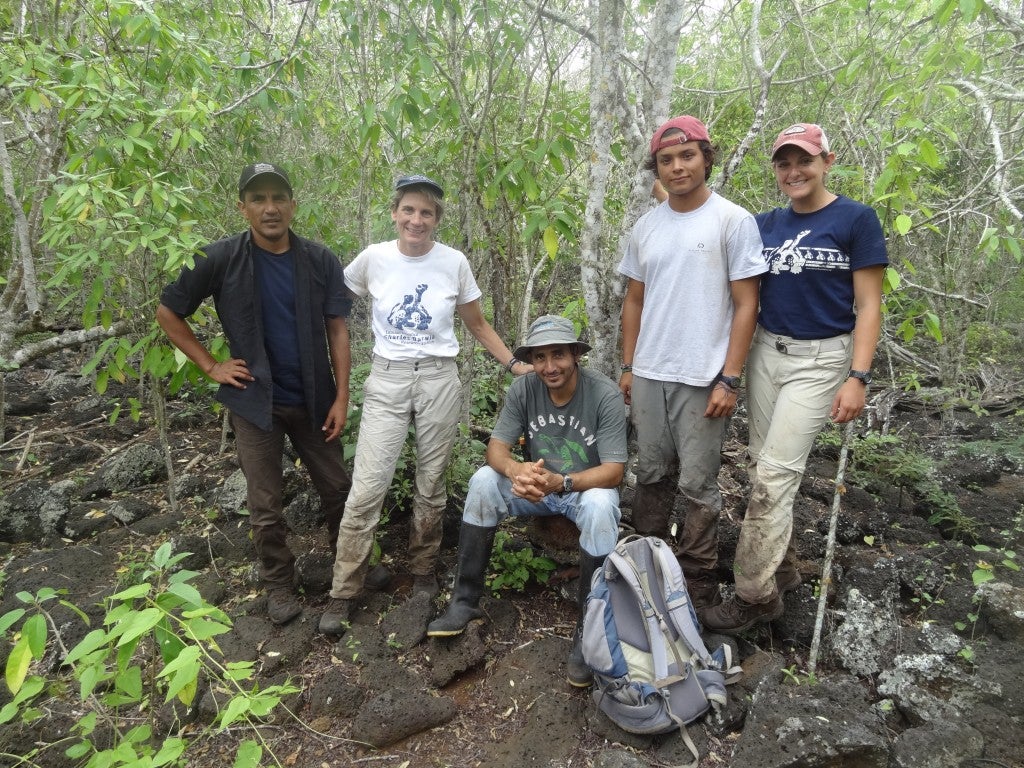Written by Julie Sheldon, Class of 2016

Members of the tortoise tracking team from left to right: Freddy Villamar, Dr. Sharon Deem, Fredy Cabrera, Walter Ernest, and Julie Sheldon. Deem is the director of the Institute for Conservation Medicine at the Saint Louis Zoo and served as PI for the project.
Carefully lumbering over sharp, broken lava underneath my stressed boot soles and anxious ankles, I was disheartened to have obtained blood samples from only two female Galapagos tortoises after hiking for five exhausting hours. The bleeding thorn scratches on my calves craved more data than this! Suddenly, my legs stiffened and my ears perked up before I could register what I had heard. “Sexo…tortugas, allí!” I whispered in my Tarzan-style Spanish to our local tortoise tracker and machete master, Freddy Villamar. I just barely picked up the classic giant tortoise grunt-of-pleasure coming from deep in the trees to my left. If I did the logic, there will be a female, or hembra, with our vocal male, or macho. After maneuvering through cacti, thorns, and wasp nests, intermittently stopping to listen for the next grunt to guide us further, we confronted our romantic couple about 100 yards into the brush. Yeah, more tortoise blood for our research project.
Due to hungry pirates sailing in the Pacific ocean off the coast of Ecuador through the 16-18th centuries, Galapagos giant tortoises were almost hunted to extinction—if you call piling slow, car-sized reptiles into hulls of ships by the hundreds to be stored as food, “hunting”. The Galapagos Tortoise Movement Ecology Programme, in conjunction with the Galapagos National Park, the Charles Darwin Foundation, and the Saint Louis Zoo Institute for Conservation Medicine, is studying the biology, reproduction, migration, and health of these dinosaurs in order to assist with their conservation. The efforts put forth by these organizations has led to population increases from only about 3,000 in the 1970s to approximately 20,000 today! Continue reading
